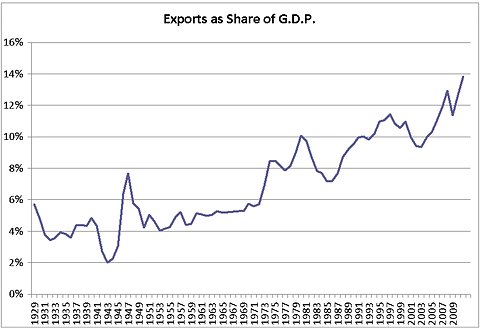DETROIT — Dozens of companies from China are putting down roots in Detroit, part of the country’s steady push into the American auto industry.
Chinese-owned companies are investing in American businesses and new vehicle technology, selling everything from seat belts to shock absorbers in retail stores, and hiring experienced engineers and designers in an effort to soak up the talent and expertise of domestic automakers and their suppliers.
While starting with batteries and auto parts, the spread of Chinese business is expected to result eventually in the sale of Chinese cars in the United States.
“The Chinese are well behind the Japanese when they hit our shores 30 years ago,” said David E. Cole, a founder of the Center for Automotive Research in Ann Arbor, Mich. “They lack the know-how, and they’re coming here to get it.”
As businesses sprout up with little fanfare, Chinese companies seem to be trying to avoid the type of public opposition experienced by the Japanese automakers Toyota and Honda in the 1980s, when the sudden influx of foreign cars competing head-on with cars from General Motors, Ford and Chrysler was perceived as a threat to American jobs.
In contrast to the Japanese, Chinese auto companies are assiduously avoiding the spotlight. Last year, the biggest carmaker in China, Shanghai Automotive Industries, opened new offices in suburban Detroit without any publicity, which is almost unheard-of in an industry that thrives on media coverage.
But China’s growth in the American auto industry is drawing notice in Washington. Last year, the Obama administration filed a complaint with the World Trade Organization that China’s government was unfairly subsidizing the production of some parts shipped to America. And the country’s inroads into American-made batteries and electric vehicles have drawn scrutiny because that sector of the industry has been heavily subsidized by the United States government.
The American industry’s overall resurgence has drawn a growing Chinese population to Detroit, with Chinese-owned suppliers bringing executives from their country and American automakers adding new talent. About 50,000 Chinese, many of them engineers and other professionals who work at General Motors and the Ford Motor Company, live in the metropolitan area.
Business networks are growing too. The Detroit Chinese Business Association boasts a flourishing membership, and counts about 100 Chinese-owned businesses, mostly auto-related, in the region.
The Ford Chinese Association, with 650 white-collar workers, predominantly from mainland China, has become one of the largest employee groups at the company. Its president, Raymond Xu, recalled that in 1999, when he came to Detroit to attend college, there were very few Chinese in the area.
“I think people are going to get more and more comfortable with it,” Mr. Xu said.
Typical of the Chinese expansion are the nondescript offices of Changan Automotive in an industrial park in the suburban city of Plymouth. Changan, a major carmaker in China, set up a research center to better understand the structural chassis of a vehicle — then hired about 20 Detroit engineers, some of whom had been laid off from Detroit’s auto companies, to staff the project.
“Most of the engineers are very young in China,” said Hong Su, the Changan executive heading the American facility. “They know how to make vehicles, but they don’t know how to develop them.”One of his employees is Alan Wall, 54, a former contract engineer at Chrysler who lost his job during the recession.
“It was an opportunity,” he said. “And those tend to come from a company that is trying to expand.”
Last year, China exported about $13 billion in automotive goods to the United States — tires, wheels and radios that are sold as replacement parts — according to AlixPartners, a consulting firm.
But many Chinese suppliers are pursuing direct business with the Detroit car companies, which now get many of their most common parts from low-wage nations like Mexico. One supplier, Brilliance Auto, an industrial giant with about 500,000 employees in the city of Shenyang in northeast China, is still an underdog in Detroit, trying to crack an intricate network of suppliers that have long relationships with G.M. and the other carmakers.
“We have been exporting our parts to North America for 15 years for the aftermarket,” said Dongbin Chen, a Brilliance executive, referring to retail sales of replacement parts. “Now our biggest opportunity is with G.M. and the other big companies.”
Brilliance scored a coup last year by supplying lightweight engine mounts for the new Cadillac ATS sedan made by G.M. in Lansing, Mich., which has whetted the company’s appetite for more.
At a United States-China conference held here in November, Brilliance displayed a large exhibit showcasing a range of mundane parts — including seat belts, steering wheels and shock absorbers — that it hopes to export to America.
“We have the ability and the capacity to supply these kinds of parts,” Mr. Chen said. “And I think right now, it is very important for us to be here.”
Article source: http://www.nytimes.com/2013/05/13/business/global/chinese-automakers-quietly-build-a-detroit-presence.html?partner=rss&emc=rss



